Declining bee population largely due to loss of habitat
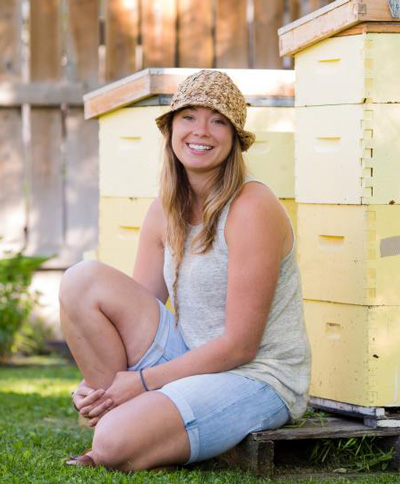 Whether it's spring or fall, now is a great time to make growing plans for the months ahead – and one important thing to consider is creating a home garden that accommodates our friend, the humble bee.
Whether it's spring or fall, now is a great time to make growing plans for the months ahead – and one important thing to consider is creating a home garden that accommodates our friend, the humble bee.
Bee populations are in serious decline globally, which scientists predict could have dire consequences for food production. Reversing that trend, says a NAIT Beekeeping instructor, requires some homegrown conservation.
“Gardeners are already on the front line.”
“The leading cause of pretty much every [bee] species on the planet’s decreasing population is habitat loss,” says Eliese Watson, founder of ABC Bees, an apiary and training company in central Alberta.
“The number-one thing you can do to support them and help their conservation is to create habitats. Gardeners are already on the front line.”
Luckily, creating and maintaining a bee-friendly garden is simple and rewarding, even for novice gardeners. Watson has written the book on how to garden with bees in mind (several of them, actually). She shares her best tips from what to plant to where to plant it.
1. ABF (Always Be Flowering)
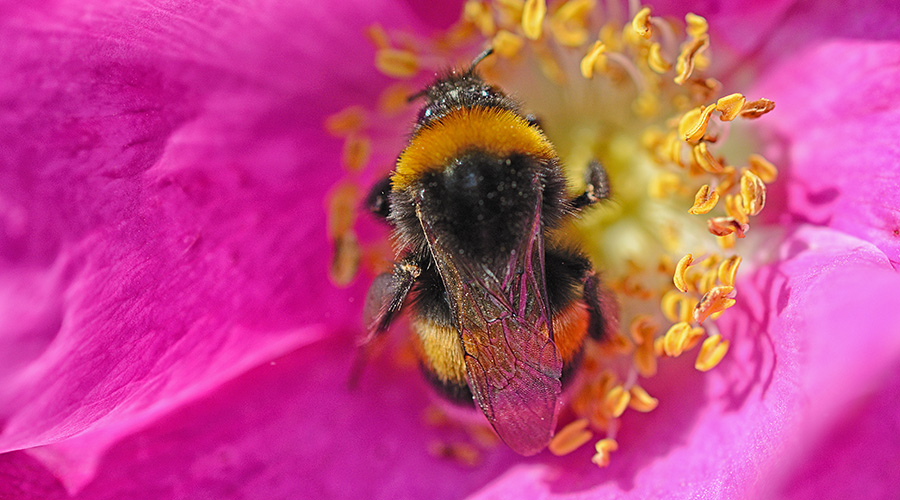 The first thing to remember, Watson says, is that bees need access to pollen and nectar all throughout the season. So don’t overload your garden with plants that are all going to bloom at once. Instead, cover your bases with flowers such as crocuses and irises, which flower in early spring, as well as later-blooming species like chrysanthemums and goldenrod.
The first thing to remember, Watson says, is that bees need access to pollen and nectar all throughout the season. So don’t overload your garden with plants that are all going to bloom at once. Instead, cover your bases with flowers such as crocuses and irises, which flower in early spring, as well as later-blooming species like chrysanthemums and goldenrod.
Don’t overload your garden with plants that are going to bloom at once.
If your garden is constantly in bloom, Watson says, “then you’re providing resources for bees when nature may not be.”
2. Incorporate bee-friendly colours
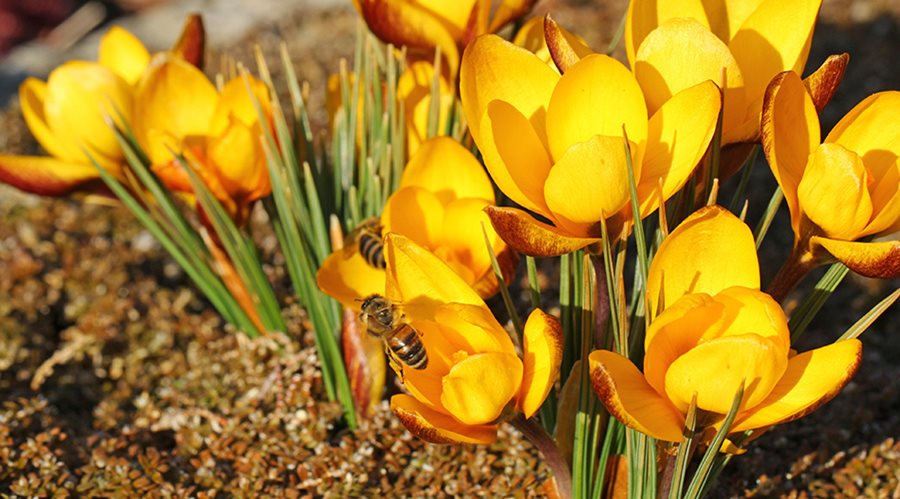 Want to have your mind blown? Google “bee vision.” It turns out that these insects’ eyesight is much different than ours, and savvy gardeners can use that to help steer bees towards their plants.
Want to have your mind blown? Google “bee vision.” It turns out that these insects’ eyesight is much different than ours, and savvy gardeners can use that to help steer bees towards their plants.
Bees cannot see the colour red.
Red, for instance, may be a striking colour to us, but bees simply cannot see it. Instead, choose flowers that are white, purple and yellow. Not only can bees make out these colours more clearly, but they can also spot special ultraviolet patterns on the flowers’ petals that guide them (some of the patterns are literally in the shape of arrows and bullseyes) to that sweet, sweet nectar contained within.
3. Plant in clumps
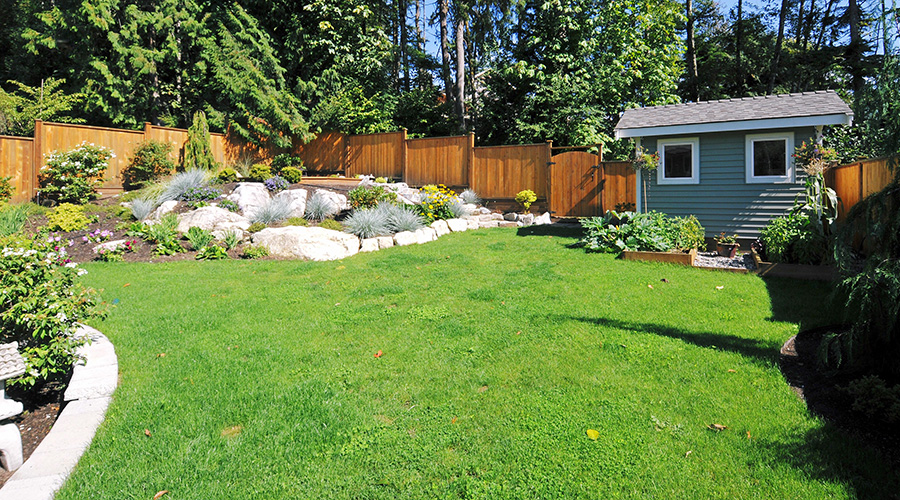 It’s easy to be tempted by a bunch of pretty-looking wildflowers, and end up organizing your garden with everything intermixed like flowers in a vase. But, Watson cautions, planting this way can actually tire out bee populations since they burn energy darting around in search of whatever’s in bloom.
It’s easy to be tempted by a bunch of pretty-looking wildflowers, and end up organizing your garden with everything intermixed like flowers in a vase. But, Watson cautions, planting this way can actually tire out bee populations since they burn energy darting around in search of whatever’s in bloom.
Plant in single-variety clumps.
Instead, she recommends planting in single-variety clumps, each with an area of about one square metre. This allows bees to move systematically, and therefore pollinate more flowers more quickly.
“It’s all about efficiency,” Watson says. “Cleaning one room at a time is much better than cleaning the whole house at once.”
4. Learn to love dandelions
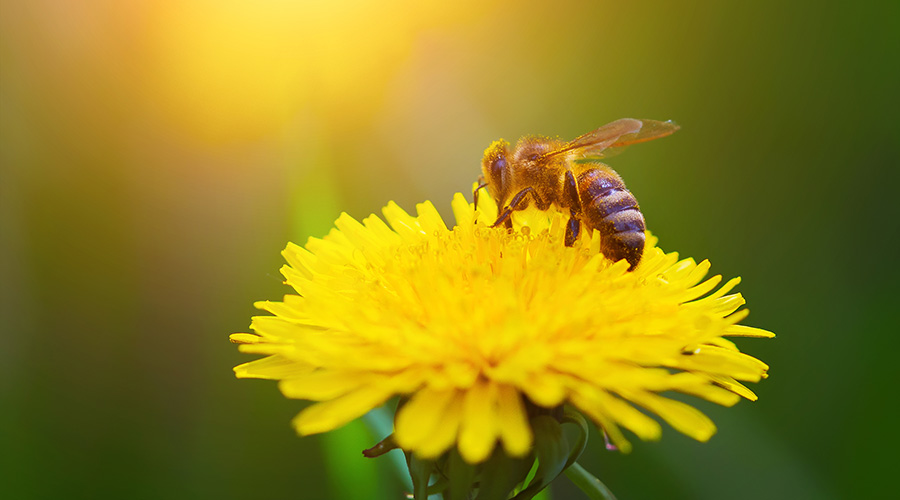 They’re the yellow nuisance we all love to hate. But, Watson says, dandelions actually play a key role in building relationships with bees.
They’re the yellow nuisance we all love to hate. But, Watson says, dandelions actually play a key role in building relationships with bees.
“They’re the first nectar sources available to bees in our Alberta climate,” she says.
“They’re the first nectar sources available to bees in our Alberta climate.”
Leaving dandelions alone has another, equally important benefit: by minimizing the use of pesticides and herbicides in your garden, you’re also keeping those toxic chemicals away from bees, to whom they can do serious damage.
If you absolutely have to get rid of your dandelions, Watson recommends digging up the entire plant, and only after the flowers have closed up. Even seemingly gentle chemicals should be avoided on flowering plants because of their side effects on insect populations.
“If it can kill a plant, it can kill a bee.”
5. Don’t forget the water!
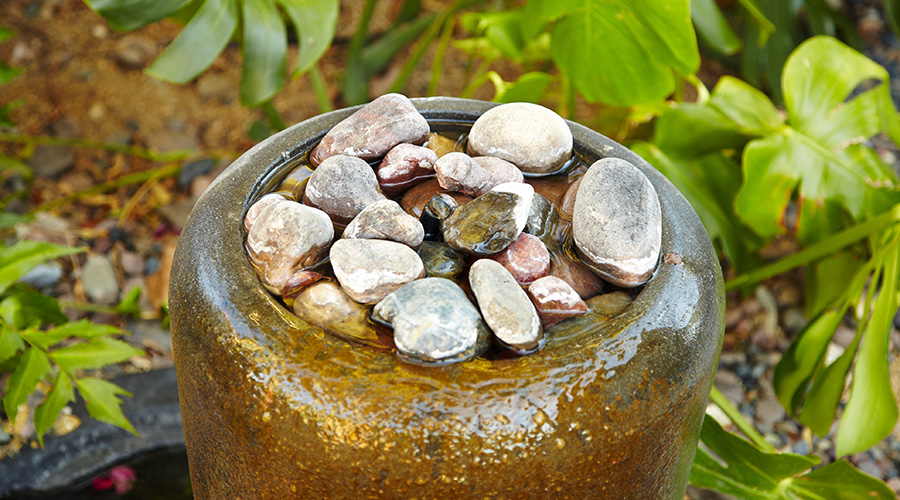 All that pollinating can be thirsty work. So Watson also recommends leaving space in your garden for at least one dedicated watering source. And it doesn’t have to be a birdbath, either. Just make sure it’s a shallow landing space, since bees breathe through tracheal tubes in the underside of their abdomens, and deeper water can actually pose a drowning hazard.
All that pollinating can be thirsty work. So Watson also recommends leaving space in your garden for at least one dedicated watering source. And it doesn’t have to be a birdbath, either. Just make sure it’s a shallow landing space, since bees breathe through tracheal tubes in the underside of their abdomens, and deeper water can actually pose a drowning hazard.
Make sure it’s a shallow landing space.
Bees also enjoy mossy surfaces, or even bowls full of decorative stones and marbles. If this last option appeals, Watson says, get thee to Pinterest, where you’ll find plenty of examples.
Feeling ambitious? Ditch your lawn entirely
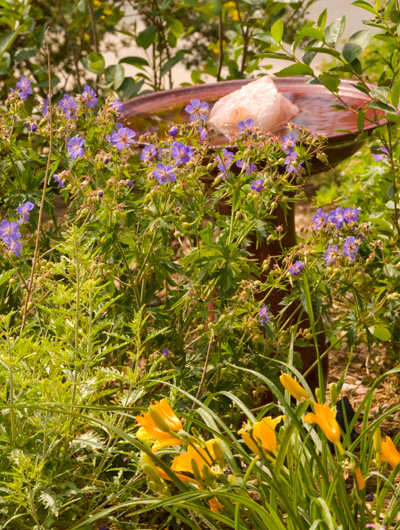 And if a plain old garden isn’t enough to excite your imagination, Watson encourages people to join a growing trend of people converting their entire lawn to what’s called a “pollinator landscape.” This means replacing your green grass with bee-friendly plants like creeping thyme or Dutch clover.
And if a plain old garden isn’t enough to excite your imagination, Watson encourages people to join a growing trend of people converting their entire lawn to what’s called a “pollinator landscape.” This means replacing your green grass with bee-friendly plants like creeping thyme or Dutch clover.
“All of the benefits of a beautiful lawn, without maintenance.”
These grass substitutes encourage visits from local bee populations, but they have several other benefits as well. The replacement plants are beautiful and fragrant, and they’re also more weed-resistant and require significantly less upkeep than grass.
“All of the benefits of a beautiful lawn, without maintenance, and it’s good for the environment?” Watson says. “Check, check, check, check.”
With all those new flowers to gorge themselves on, the bees will thank you, too.